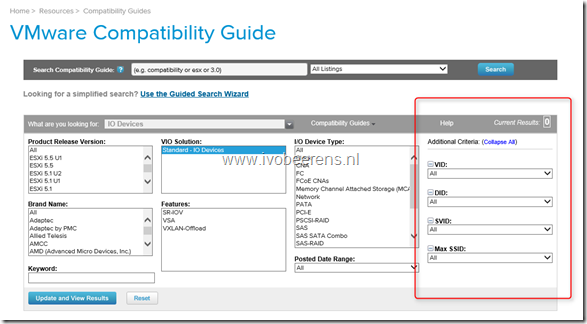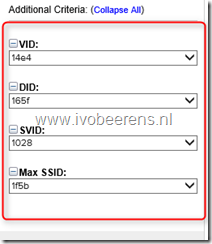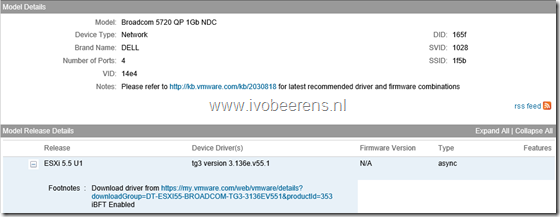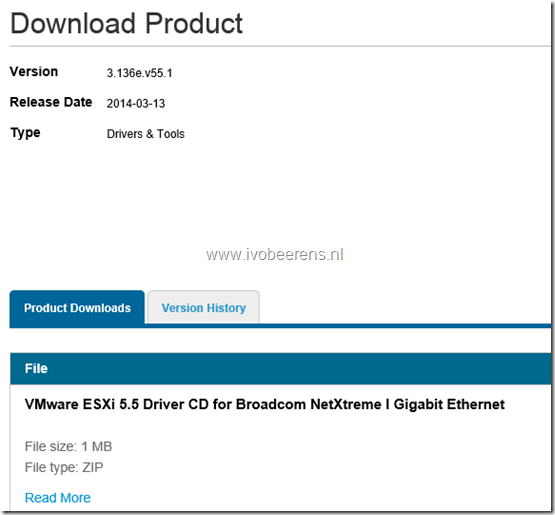Identify the NIC driver and supported driver version for an ESXi server
Lately, I troubleshooted some NIC driver problems in VMware ESXi. During the troubleshooting, I needed to Identify the NIC driver, the software version used, and the latest driver version supported by VMware. Here are the steps outlined.
Identify the NIC driver and software version:
- Make an SSH connection to the ESXi host
- Identify all the NICs by using the following command:
esxcli network nic list
- In this example you can see that Intel (igb) and Broadcom (tg3) NICs are used.
- To identify the driver version of the Broadcom NIC (vmnic0) use the following command:
esxcli network nic get -n “vmnic0
driver: tg3 version: 3.135b.v50.1 firmware-version: FFV7.6.14 bc 5720-v1.31 bus-info: 0000:01:00.0
Identify the latest NIC driver supported by VMware:
- We need to find the hardware IDs of the NIC by using the following command:
vmkchdev -L | grep “vmnic"
The hardware ID contains the following parts:
VID = Vendor Id (Red part)
DID = Device Id (Yellow part)
SVID = Sub-Vendor Id (Green part)
SSID = Sub-Device Id (Blue part)
- Open the VMware Compatibility Guide (HCL) webpage and choose IO Devices, Link
- On the right you see the “Additional Criteria” column. Enter the VID, DID, SVID, and SSID generated by the
vmkchdevcommand
- Click the “Update and View Results” button
- The NIC is displayed, click on the Model
- Expand the version of ESXi (release) used. Click on the the Download link (if exist).
- Download the driver and use VMware Update Manager (VUM) or use
esxcli software vib updatecommand to install the driver






